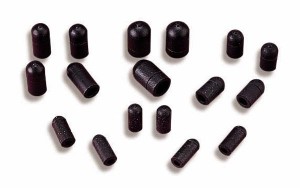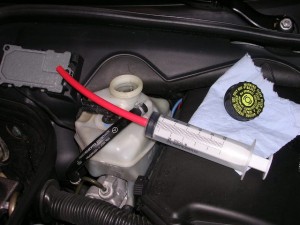The wise mechanic says: Avoiding the need for repairs is the best way to save money on repairs. Here are a few tips and tidbits along those lines:
* Parking brake on first –
It’s a small thing – but could save you a great deal of money. By putting the parking brake on before you put the gear shift lever into Park (or a manual transmission into Reverse – or whatever) you avoid using the transmission to hold the car’s weight in place. You use the car’s brakes instead – as the Motor Gods intended. Many people make the mistake of putting the transmission into Park first – then engaging the parking brake. This may assure the car stays put – but it also assures tremendous loading of the transmission – which isn’t good for it. Which ultimately means, not good for you.
* Idle it with the clutch out –
Want to do your manual transmission a favor? When you first start the car in the morning, ease the clutch out right after you start the engine – and put the trans in neutral (keeping your foot on the brake pedal, obviously). Why do this? With the engine running and the clutch out, the transmission is engaged (connected to the engine) and the gears inside are turning – which will coat them with fresh lube and also speed their warm-up. This will reduce wear and tear and improve driveability on cold days. Also, it will take pressure of the clutch/pressure plate/pilot bearing – which should increase the life expectancy of those parts. Even when the car is fully warmed-up, try to avoid prolonged periods of clutch disengagement. When you roll up to a red light, put the trans in neutral and let the clutch out until the light goes green – and it’s time to get going again. Don’t sit at the light for five minutes with your left foot pressing the clutch to the floor. 
Your car will thank you for your consideration.
* Battery disconnect switch –
If you have a vehicle that sits for weeks at a time without being driven, you might want to look into a disconnect switch for the battery. This lets you “turn off” the battery, without having to do more than pop the hood and turn a knob/handle (the one you installed on the battery’s cable terminal). If you don’t do this – and there’s even a slight current draw from the car’s systems – the battery will likely be be either dead or low next time you use the car. Dead will be obvious, but low will not be – for awhile. However, over time, your battery’s life will likely be cut short. Excessive discharge-recharge cycles are the reason why. Maintaining a battery at or close to peak charge is one of the keys to long battery life. And could save you a tidy sum in premature $100-plus replacement batteries.
* Vacuum caps on grease fittings –
You’re supposed to make sure a grease fitting is clean before attempting to shoot fresh grease in – otherwise you’ll also shoot some fresh dirt in, too. A simple – and cheap – way to keep grease nipples clean (and free of rust) is to slip a rubber vacuum cap onto the nipple after each servicing. You can buy vacuum caps for next to nothing at most any auto parts store. Find the size you need – and buy a handful. Next time you’re greasing the ball joints, slip a cap onto the nipple after you’ve finished. It’ll keep crud off the nipple – and make the next time that much easier. This also works well on threaded shock absorber studs, too. By covering up the threads, you’ll have a much easier time turning out the bolt next time you need to replace the shocks – because the threads won’t have rusted up as badly. Maybe not even at all. 
* Use a syringe to suck out brake/clutch reservoir fluid –
Most modern cars with manual transmissions have hydraulic-assist clutches, with a small reservoir of fluid (brake fluid) that should be periodically changed out. And of course, all cars have hydraulic-assist brakes, with another reservoir of fluid (also brake fluid) that should be periodically changed out. If you don’t do this, the fluid gets contaminated/degrades – and that will eventually lead to expensive problems. You can change all the fluid at once, by bleeding the system – but this may require tools/skills you haven’t got – in particular, if the car has anti-lock brakes (ABS). 
But if you have a syringe and a catch can, you can remove a third to half or more of the fluid without removing a single bolt or using a single tool. Just open the top of the reservoir and draw out fluid – being careful not to expose the little holes at the bottom of the reservoir (or you’ll let air into the system and then you will have to bleed the entire system). Then top off with fresh fluid to the proper level. If you do this a couple of times (takes about five minutes per time) you’ll have effectively replaced most of the fluid within the system.
It’s an almost no-cost, no-tool and no-skill way to keep brake/clutch fluid reasonably fresh without having to actually bleed the system – or pay someone else to do it.
Throw it in the Woods?










I would add:
replace the battery 6 months before its warranty expires. doing so will lessen the strain on the alternator during the end of the battery’s life. Cheers.
Eric – that is good common sense advice. Maybe I’ll change the brake and power steering fluid out of the reservoir this weekend.
Thanks, Swamp!
I learned a lot of this stuff “on the go” – the accumulated wisdom – such as it is – of a lifetime of piddling around with machinery….
Thanks for the parking brake tip. This will come in handy for me as one of my friends lives on a street that’s something like a +35 degree incline. Every time I park my wife’s car there I can tell the tranny isn’t happy about holding the car in place until I get the brake on. I guess the inverse would be true if I am getting back in the car to go home. Put the car in gear and then disengage the parking brake. Thanks Eric.
You bet Jay – welcome!
Back in about 96, a friend who purchased a new F150 was very anal about making sure he put his parking brake on before shifting into park as you described. People would make fun of him for being so meticulous and particular about doing this as well as some of his other quirks, but here it is 2013 and his truck is still going strong with 390k miles and he’s never had a single issue with the transmission.
When it comes to anything you have money tied up in – or which will cost you money if you don’t take care of it – being anal is good policy in my book!
I believe it’s a good practice to shift into neutral (and engage the clutch) when stopped, both to extend the lives of the throw-out and pilot bearings, and for safety. I’d hate to have a clutch cable snap or hydraulics fail with the car in gear and pedestrians crossing in front of me . I know the odds are slim, but an ounce of prevention…
Eric, thanks for the brake/clutch fluid trick! I suppose the same applies to power steering, too.
All the best,
Myles
If you have a British car you can probably start the car with the clutch not depressed.
Also, how well would those vacuum caps work on a drive shaft u-joint grease nipple? Lots of spinning around for something that’s greased then slipped on…
Thanks for the advice. It always just seemed right to me to pop it into neutral and take my foot off the clutch at a red light.
I tend to leave my car in neutral when parked, with the parking brake engaged. After I start the engine I always release the clutch for a few seconds before I put it in gear and drive. I assume that has the same effect as what you described, yes?